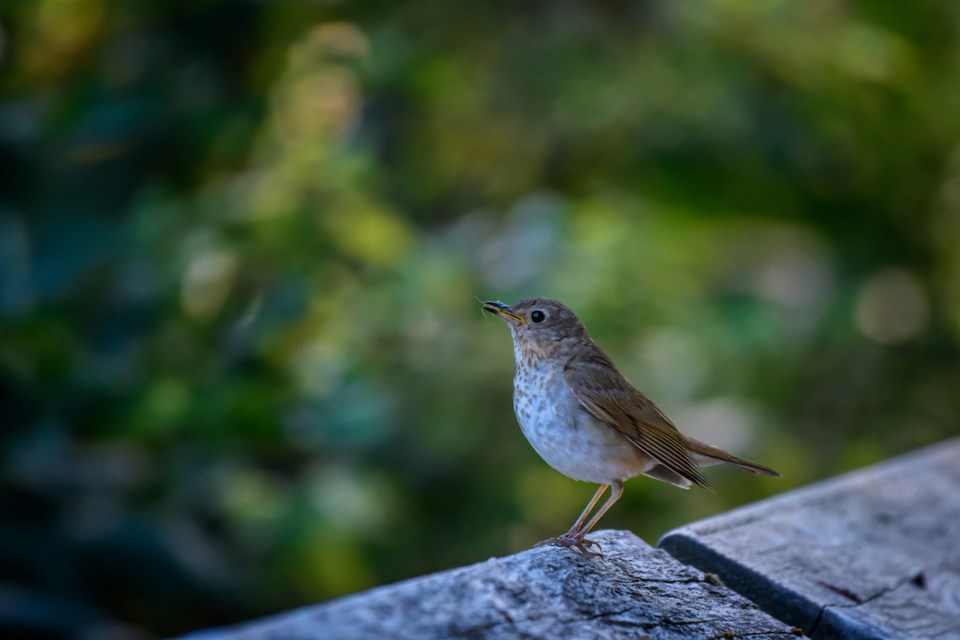Something is missing! We now eat our supper on the deck to a deafening silence. A month ago the symphony of birdsong included Swainson’s thrush, MacGillivray’s warbler, willow flycatcher, warbling vireo, white-crowned sparrow and numerous others. Even the house wren, which has been singing non-stop since late April has gone silent. I am left with a huge hole in my life but it is a reminder of the wondrous procession of seasonality in our northern latitudes. In August the birds are silent, and many will make long migrational flights to distant places in the tropics but come springtime, in April and May, they will once again be back in our Sunshine Coast gardens singing their hearts out to attract a mate and delighting their human audience in the process.
While the generally insectivorous songbirds are heading south, other bird families and species are reappearing, either temporarily in migration, or to spend the winter with us. Ducks, of many species, are winter residents on the Sunshine Coast, but few actually breed here, with most migrating east and north to lakes and ponds east of the Coast Range. Only the two merganser species: common and hooded, plus mallards and wood ducks are common breeders here. However, in August, early returners such as pintail and green-winged teal begin to appear on the mudflats at the head of Porpoise Bay. This location is also the place to observe returning gull species such as Bonaparte’s and ring-billed gulls. On the Salish Sea, at shingle spits such as Mission Point, Roberts Creek and Chaster Beach, returning California gulls become common. Look for their black wing tips to distinguish them from the ubiquitous glaucous-winged gulls which are always the default gull on the Sunshine Coast.
Other typical bird sightings at this time of the year are the flights of common nighthawks on warm evenings. These birds have a hawk-like profile, as they zig-zag across the sky scooping up insects in their huge gape. The birds have a white line on their wings and often vocalize with a “peent’’ sound. If you notice a small bird feeding a larger, begging, brown bird this will be a brown-headed cowbird chick being fed by its host parent. Cowbirds are nest parasites, laying their eggs in the nests of many other species, who are left with the task of raising the young cowbird, to the detriment of their own young.
To report your sightings or questions contact [email protected] or 885-5539. Good Birding.



